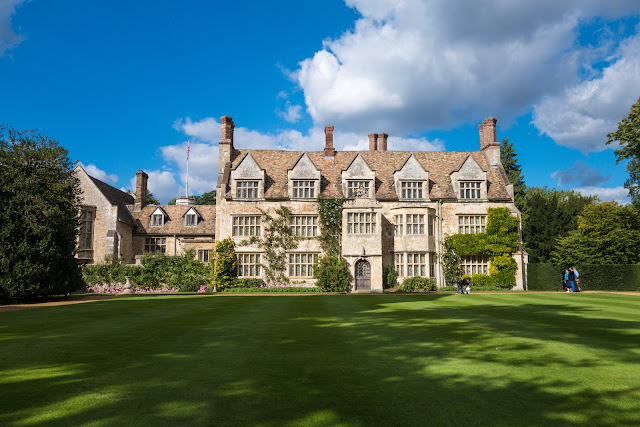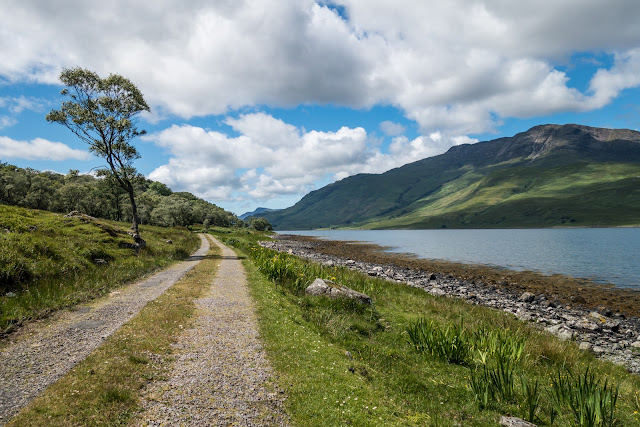Anglesey Abbey
Anglesey Abbey is a great place to visit and is very family orientated as well. A community of Augustinian canons built a priory here, known as Anglesea or Anglesey Priory, some time during the reign of Henry I (i.e., between 1100 and 1135), and acquired extra land from the nearby village of Bottisham in 1279. The canons were expelled in 1535 during the Dissolution of the Monasteries.
The former priory was acquired around 1600 by Thomas Hobson, who converted it to a country house for his son-in-law, Thomas Parker, retaining a few arches from the original priory. At that time the building's name was changed to "Anglesey Abbey", which sounded grander than the original "Anglesey Priory". Further alterations to the building were carried out in 1861.
Now it is a beautiful garden to visit, owned by the National Trust, and well worth spending the day here.
Heading toward the winter garden first, we encounter thes beautiful `touchable` trees You just have to!.
As this is September, the trees, and indeed the whole garden, is showing signs of the autumnal season.
Silver Birches in the winter garden section.
There are lots of trees around the site, in avenues (below) and in individual areas (above)
Autumn colours along this avenue. To commemorate the coronation of King George VI and Queen Elizabeth in 1937, Lord Fairhaven planted this extensive avenue of trees with a crossing avenue at the far end. The trees used were London plane alternating with horse chestnut in four rows, copying those planted in Windsor Great Park
A large pool, the Quarry Pool, is believed to be the site of a 19th-century coprolite mine
A watermill probably stood on the site of Lode Mill at the time of the Domesday survey in 1086. The Mill which stands today is likely to have been built in the eighteenth century.
In 1793 the mill was described in a sale notice as 'Anglesea Watermill with dwelling house, yard, garden, barn, stables and outhouse and 3 acres of pasture adjoining'. Old photographs show the house next to the mill. The house was taken down in the renovation of the 1930s.
In about 1900 the mill was converted from corn grinding to cement grinding. The cement was generally made by firing a mixture of clay and lime or natural chalk at about 400°C and grinding the resulting clinker into a powder.
An engine may have been installed at this time, as inside the mill today there are some shafts, gears and a chain drive that are unusual in a watermill.
The mill was owned by the Bottisham Lode Cement and Brick Company. Bottisham Lode is the stretch of water below the mill, one of a number of lodes that were used as a transport link to the River Cam. The water above the mill is called Quy Water.
Unfortunately, the Bottisham Lode Cement and Brick Company was a victim of competition and the business had closed down by about 1920, leaving the mill to become derelict.
The extensive landscaped gardens are popular with visitors throughout the year. The most visited areas include the rose garden and the dahlia garden, which contain many dozens of varieties. Out of season the spring garden and winter dell are famed nationally, particularly in February when the snowdrops first appear. The lawns of the South Park are mown less frequently and this allows the many wildflowers to flower and set seed. Over 50 species of wildflower have been recorded, including bee orchid, pyramidal orchid and common spotted orchid. In mid-summer, there are large numbers of butterflies such as meadow brown, gatekeeper, small skippers and marbled whites.
Seen in the great dahlia garden, some beautiful displays - this suspended display really effective as you approached.
The Circular Temple, Anglesey Abbey
A touch of autumn.
In the rose garden
There is a lot to see at any time of year, masses of snowdrops in late winter but when we visited, cyclamen were putting on a great display as well as the dahlia. With a great place to get food, its a must see at least once.




























Comments